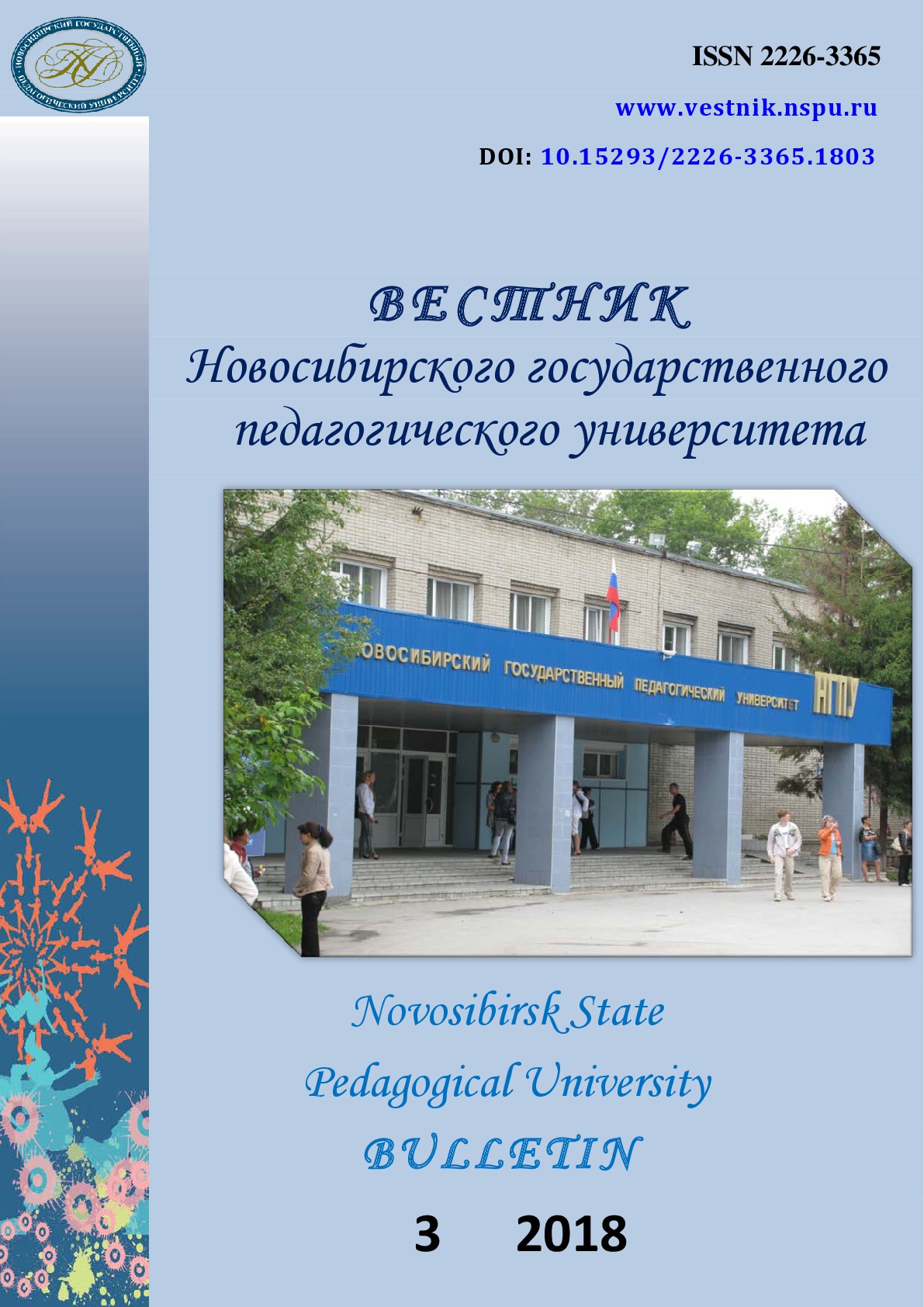Возможность пластических перестроек в регуляции положения тела в пространстве у детей с трудностями в обучении 7-15 лет после двигательно-ритмического тренинга
The possibility of plastic rearrangements in the integrative activity of the brain in the regulation of the body position in space in children aged 5–15 years with learning disabilities after motor-rhythmic training
Author(s): Victoria Leonidovna Efimova, Elena Ivanovna Nikolaeva, Elena Alexandrovna Ogorodnikova, Nataliya Afanasievna RyabchikovaSubject(s): Education, Psychology, Health and medicine and law
Published by: Новосибирский государственный педагогический университет
Keywords: Postural disorders; Learning disabilities; Learning skills; Reading; Writing; Children of 5–15 years; Motor-rhythmic training;
Summary/Abstract: Introduction. It is believed that the causes of learning disabilities in children cannot be reduced solely to the imperfection of educational programs – there are biological and psychophysiological factors reducing the ability of children to learn. The article focuses on the development of integrative brain activity, regulating the ability to maintain dynamic balance in the performance of motor tasks, in students with learning disabilities. The aim of the study was to identify postural disorders in schoolchildren with learning disabilities, justify the need for special trainings aimed at improving the regulation of body position in space and assess their effectiveness. Materials and Methods. The study involved 56 students (aged between 7 and 15 years; 40 boys, 16 girls). All subjects were diagnosed by a neurologist with SDFSS a specific learning disorders. The children were divided into experimental (26) and control (26 people) groups on a random basis. Tests and trainings were prescribed by a neurologist and were conducted with the written consent of the parents. Evaluation of the dynamic balance of the subjects before and after the training was conducted using a digital posturography system. The survey report was generated automatically. After the evaluation, the children of both groups participated in 2-hour individual trainings for 14 days. The subjects from the experimental group took part in the training developed by the authors, including neurodynamic gymnastics; training based on biological feedback, developed by Interactive Metronome, USA; BOS-training Balance Master. Training of children belonging to the control group was conducted only with the help of the hardware and software complex Balance Master, the lesson lasted for 45 minutes. Results. The obtained data confirm postural and rhythmic dysfunction in students with learning difficulties. The presented comprehensive training was more effective than trainings aimed at specific motor skill development. Conclusions. The data show that, on the one hand, children with difficulties in school had problems in monitoring and regulating posture. On the other hand, targeted training has led to a significant improvement in the regulation of the body position in space in children aged both 5 and 15 years.
Journal: Вестник Новосибирского государственного педагогического университета
- Issue Year: 8/2018
- Issue No: 3
- Page Range: 155-166
- Page Count: 12
- Language: Russian

